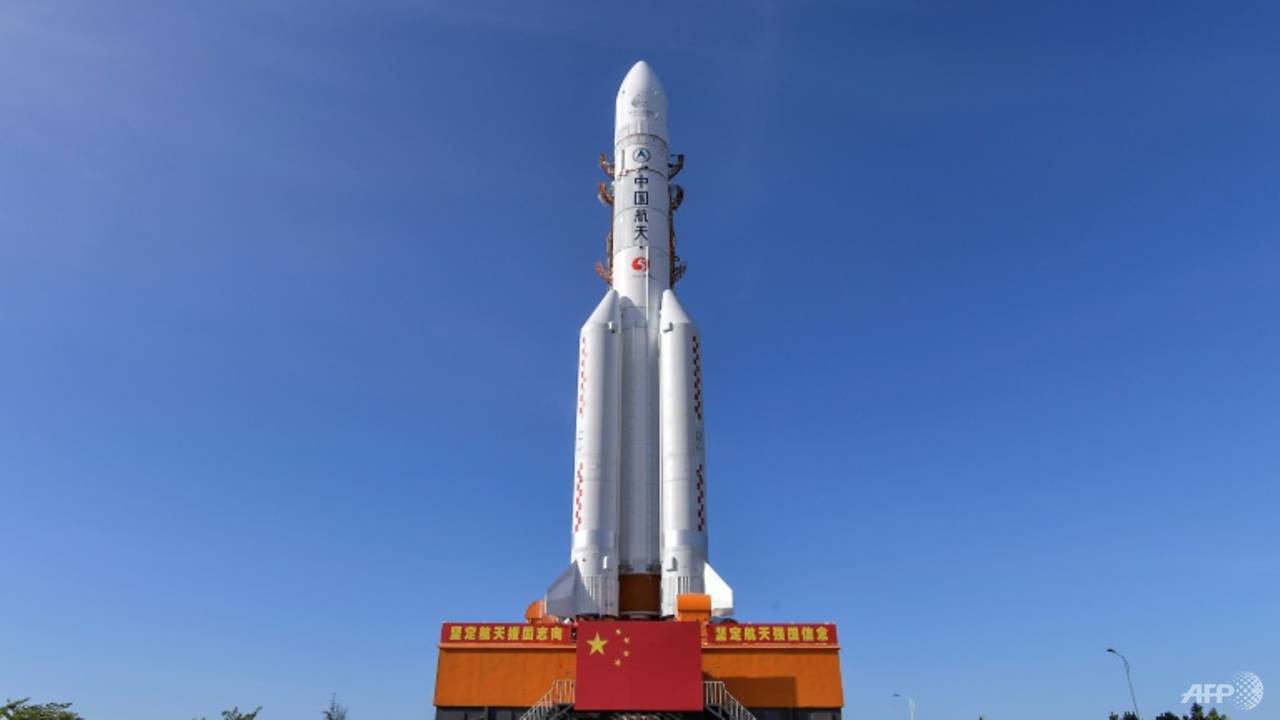BEIJING: China launched a rover to Mars on Thursday (Jul 23), another milestone for its space programme after putting humans into orbit and landing a probe on the moon.
It is among a trio of nations, along with the United Arab Emirates and the United States, launching missions to the Red Planet this month, taking advantage of a period when Mars and Earth are favourably aligned.
Advertisement
Advertisement
Beijing's space programme has made huge strides in recent years as it tries to catch up with the United States and Russia.
Graphic on active satellites and rovers on and around Mars AFP
Here are five things to know about the programme:
"QUESTIONS TO HEAVEN"
Advertisement
Advertisement
China's Mars probe lifted off on Jul 23 from the southern island of Hainan.
The mission was dubbed Tianwen-1 ("Questions to Heaven") in a nod to a classical Chinese poem that has verses about the cosmos.
The probe aims to go into Martian orbit, land on the planet and release a small rover to conduct research on its surface.
The craft will travel at least 55 million kilometres to reach its destination. It will arrive seven months after launch, in February, according to an official.
Factfile on China's aim to reach Mars with an orbiter, a lander and a rover. The mission is expected to launch between July 20 and 25. AFP/John SAEKI
WITHOUT RUSSIA THIS TIME
It is not China's first attempt to go to Mars.
A previous mission with Russia in 2011 failed because the Russian launcher was unable to get the craft into a transfer orbit to slingshot towards the Red Planet.
The hardware partially disintegrated as it later crashed back to Earth.
Following that failure, Beijing decided to try again on its own.
"Its purposes are not different from those of other countries: develop the capability, explore the universe … and finally, create political influence and national prestige," said Chen Lan, an independent analyst at GoTaikonauts.com, which specialises in news about China's space programme.
SIX-WHEELED ROVER
The rover, weighing 240kg, has six wheels and four solar panels, Chinese state media reported.
The rover will roam Mars for three months, according to Sun Zezhou, chief engineer of the probe.
China launched its Tianwen-1 Mars mission on Thursday AFP/Noel CELIS
The machine is supposed to analyse the planet's soil and atmosphere, take photos, chart maps and look for signs of past life.
JADE RABBITS
China sent two rovRead More – Source
BEIJING: China launched a rover to Mars on Thursday (Jul 23), another milestone for its space programme after putting humans into orbit and landing a probe on the moon.
It is among a trio of nations, along with the United Arab Emirates and the United States, launching missions to the Red Planet this month, taking advantage of a period when Mars and Earth are favourably aligned.
Advertisement
Advertisement
Beijing's space programme has made huge strides in recent years as it tries to catch up with the United States and Russia.
Graphic on active satellites and rovers on and around Mars AFP
Here are five things to know about the programme:
"QUESTIONS TO HEAVEN"
Advertisement
Advertisement
China's Mars probe lifted off on Jul 23 from the southern island of Hainan.
The mission was dubbed Tianwen-1 ("Questions to Heaven") in a nod to a classical Chinese poem that has verses about the cosmos.
The probe aims to go into Martian orbit, land on the planet and release a small rover to conduct research on its surface.
The craft will travel at least 55 million kilometres to reach its destination. It will arrive seven months after launch, in February, according to an official.
Factfile on China's aim to reach Mars with an orbiter, a lander and a rover. The mission is expected to launch between July 20 and 25. AFP/John SAEKI
WITHOUT RUSSIA THIS TIME
It is not China's first attempt to go to Mars.
A previous mission with Russia in 2011 failed because the Russian launcher was unable to get the craft into a transfer orbit to slingshot towards the Red Planet.
The hardware partially disintegrated as it later crashed back to Earth.
Following that failure, Beijing decided to try again on its own.
"Its purposes are not different from those of other countries: develop the capability, explore the universe … and finally, create political influence and national prestige," said Chen Lan, an independent analyst at GoTaikonauts.com, which specialises in news about China's space programme.
SIX-WHEELED ROVER
The rover, weighing 240kg, has six wheels and four solar panels, Chinese state media reported.
The rover will roam Mars for three months, according to Sun Zezhou, chief engineer of the probe.
China launched its Tianwen-1 Mars mission on Thursday AFP/Noel CELIS
The machine is supposed to analyse the planet's soil and atmosphere, take photos, chart maps and look for signs of past life.
JADE RABBITS
China sent two rovRead More – Source












